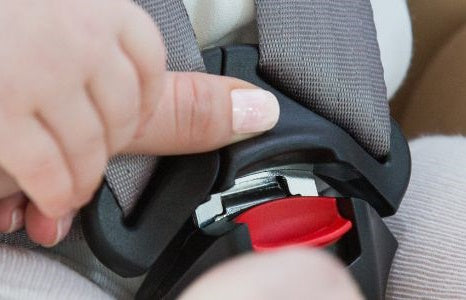The Alarming Reality of Child Road Safety in the UK: Why Child Car Seats Matter
In recent years, child road safety in the UK has become a major concern. The number of children and young people killed in vehicle collisions has steadily risen, with the following statistics highlighting the urgent need for increased awareness and safety measures:
- 2019-2020: 62 deaths
- 2020-2021: 71 deaths
- 2021-2022: 78 deaths
In 2021 alone, 512 children aged seven or younger were either killed or seriously injured on British roads, with six of those fatalities occurring while traveling in cars. These alarming figures underscore the importance of proper safety measures, such as child car seats, to ensure the protection of young passengers.
Here are some additional facts that highlight the severity of the issue:
- On average, 10 children aged seven or younger are killed or seriously injured on British roads every week.
- As children approach the age of 11, the risk of being killed or seriously injured in a road accident increases significantly.
- Boys are at the greatest risk during the autumn term, with the highest number of fatal or serious injuries occurring at this time.
- While the rate of serious or fatal road traffic injuries has decreased over the past decade, the decline has plateaued in recent years.
- Road traffic injuries remain the leading cause of death and acquired disability among children.
These statistics are a stark reminder of the critical role child car seats play in protecting our little ones. By using the appropriate car seat for your child's age, height, and weight, you are significantly reducing the risk of injury or death in the event of a crash.
At our authority child car seat website, we are committed to ensuring that every child is safely secured on the road. Explore our range of expertly reviewed and tested car seats, and make the right choice for your child's safety today.
Many people underestimate just how dangerous overheating in a car can be. In 2015 alone, heatstroke or suspected heatstroke tragically claimed the lives of 39 children aged newborn to 14 years (Safe Kids). However, this is only one of many risks children face while traveling in vehicles. Understanding the risks posed by unrestrained passengers, unsecured items, and improper car seat use is critical for preventing unnecessary accidents and injuries.
The Danger of Unrestrained Passengers
An unrestrained passenger in a vehicle is not only a danger to themselves but also to other occupants. In the event of a crash at just 30 mph, a person without a seatbelt will be thrown forward with a force of 30 to 60 times their body weight (How Stuff Works). This impact can cause catastrophic harm both to the unrestrained passenger and others in the car. The passenger will continue to travel at the speed the vehicle was moving until their momentum is stopped by a solid object—often the dashboard, windshield, or another passenger. In many cases, these injuries are fatal, and in severe crashes, passengers can even be ejected from the vehicle (Road Safety Observatory).
The Hidden Dangers of Unsecured Items
In addition to passengers, unsecured items in the car can become lethal projectiles in the event of a collision. For example, a box of tissues can become as dangerous as a house brick if you stop suddenly at 30 mph (Dorel Juvenile). It's crucial to ensure all loose objects are properly secured to minimize the risk they pose during sudden stops or accidents.
Increasing Child Road Fatalities
Child fatalities on UK roads have sadly been increasing, with 69 children losing their lives in road traffic accidents in 2016, up from 54 in 2015 (Department of Transport). Additionally, 2,033 children were reported as seriously injured, and 13,874 sustained minor injuries in 2016. These statistics highlight the importance of proper restraint use to prevent such tragedies.
Importance of Proper Restraints
A sobering statistic from a trauma center revealed that out of 119 infants involved in car crashes, only 67 were properly restrained. Those who were correctly secured were found to be 12.7 times less likely to need trauma care after the collision (Journal of Paediatric Surgery). Properly restraining children significantly reduces the risk of injury, which underscores the importance of using the right car seat for your child’s age and size.
Rear-Facing Seats: A Safer Option
In Sweden, children are kept in rear-facing car seats until at least the age of 4, and many parents extend this practice until around 6 years of age. The benefits are clear: between July 2006 and November 2007, no child under 6 was killed in a car crash in Sweden (VTI Sweden). In contrast, the UK sees about 205 children injured and 21 children killed in car crashes annually (AA).
Studies show that rear-facing seats can reduce the risk of injury and death in young children by up to 90% during a collision (Safety for the Growing Child – Swedish Accident Data). Rear-facing seats distribute the force of a crash more evenly across the body, reducing the strain on the child's neck and spine, which is especially important as young children have proportionally larger heads than adults.
Reducing Neck Stress in Collisions
Rear-facing seats also significantly reduce the stress placed on a child’s neck during a crash. In a forward-facing seat, a child weighing 15kg could experience a neck strain of 180-220kg in a 31 mph collision. In contrast, a rear-facing seat reduces that stress to just 40-60kg (BeSafe). This difference is crucial, as a young child’s head can make up as much as 25% of their body weight, compared to just 6% for an adult.
The Importance of High-Back Boosters
Despite the benefits of rear-facing seats and proper restraints, many people are unaware of the need to use a high-back booster until a child reaches 135cm in height or 12 years of age. High-back boosters can reduce the risk of injury in children aged 4 to 10 by 77% in a crash (Safety for the Growing Child – Swedish Accident Data). High-back boosters provide better head and side protection and ensure the seatbelt is positioned correctly across the shoulder.
Since March 2017, backless booster seats can no longer be manufactured for children under 125cm in height or 22kg in weight. However, parents who already own these seats can continue to use them for children who meet the minimum height and weight requirements (Department for Transport).
Beware of Thick Jackets
Another often-overlooked risk involves children wearing thick jackets in car seats. Most winter coats are made with bulky material that prevents the car seat harness from being properly tightened. In a collision, this loose harness can fail to restrain the child effectively, increasing the risk of injury (BeSafe). To ensure your child is safe, remove thick coats before securing them in the car seat, and use a blanket over the harness to keep them warm.
Conclusion
Child safety in cars is of paramount importance. By understanding the dangers of overheating, ensuring all passengers are properly restrained, and using the correct car seats and restraints for your child's age, you can significantly reduce the risk of injury or death. Whether it’s choosing a rear-facing seat, securing loose items in the car, or avoiding the use of bulky clothing, these measures could save lives. Always follow car seat guidelines and stay informed about the latest safety regulations to protect your child on every journey.







Comments (0)
There are no comments for this article. Be the first one to leave a message!